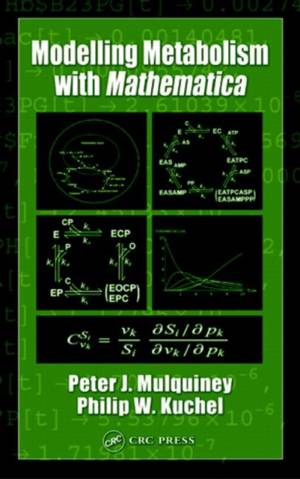
- Afhalen na 1 uur in een winkel met voorraad
- Gratis thuislevering in België vanaf € 30
- Ruim aanbod met 7 miljoen producten
- Afhalen na 1 uur in een winkel met voorraad
- Gratis thuislevering in België vanaf € 30
- Ruim aanbod met 7 miljoen producten
Zoeken
€ 496,45
+ 992 punten
Uitvoering
Omschrijving
With the advent of sophisticated general programming environments like Mathematica, the task of developing new models of metabolism and visualizing their responses has become accessible to students of biochemistry and the life sciences in general. Modelling Metabolism with Mathematica presents the approaches, methods, tools, and algorithms for modelling the chemical-dynamics of metabolic pathways. The authors explain the concepts underpinning the deterministic theory of chemical and enzyme kinetics, present a graded series of computer models of metabolic pathways leading up to that of the human erythrocyte, and document a consistent set of rate equations and associated kinetic parameters. The experimental and theoretical study of metabolism in mammalian cells has a long and fruitful history, but our understanding of cellular metabolism at the molecular level is far from complete. This book enables its readers to formulate their own models of time-dependent metabolic systems and aids them in the quest for the many fundamental and clinically relevant discoveries that remain to be made.
Specificaties
Betrokkenen
- Auteur(s):
- Uitgeverij:
Inhoud
- Aantal bladzijden:
- 328
- Taal:
- Engels
Eigenschappen
- Productcode (EAN):
- 9780849314681
- Verschijningsdatum:
- 14/05/2003
- Uitvoering:
- Hardcover
- Formaat:
- Genaaid
- Afmetingen:
- 165 mm x 239 mm
- Gewicht:
- 612 g

Alleen bij Standaard Boekhandel
+ 992 punten op je klantenkaart van Standaard Boekhandel
Beoordelingen
We publiceren alleen reviews die voldoen aan de voorwaarden voor reviews. Bekijk onze voorwaarden voor reviews.











